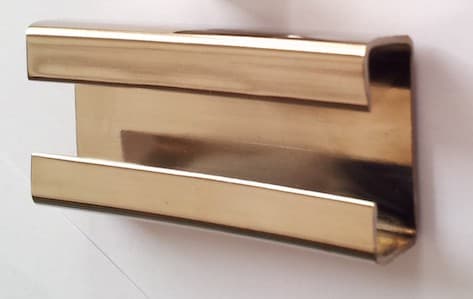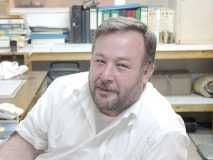
Curated with aloha by
Ted Mooney, P.E. RET

The authoritative public forum
for Metal Finishing 1989-2025

-----
Reflective coatings/platings Q&A
Q. Hello to all. We have a project that needs a large (400 X 400 mm square shape) infrared reflector. This reflector is situated under (at 10 mm distance) five 500W ruby halogens / 2500 W total power. We think that we can make this reflector from highly polished copper sheet due to its reflectance proprieties on infrared. The only problem that we have is that the copper will oxidize rapidly over time and loose the reflectance proprieties. Please advise me about coatings options that are affordable and withstand high temperature. Thank you in advance, Dan
Dan Badea- Lugo /Spain
November 28, 2020
A. Hi Dan. I am having problems helping with your posting because 'high temperature' is vague and I am not a heat transfer expert able to estimate the temperature of this reflector. Further, I'm not understanding quite what 'affordable' means. Is this a one of a kind apparatus for scientific experiments, or a mass-produced infrared heater for paint curing and similar ovens?
The ideal coating would probably be nickel plating followed by gold plating per the discussion on this page, which would not be prohibitive for an important instrument, but probably would be prohibitive for a mass-produced reflector.
A dip in a proprietary copper preservative based on sodium benzotriazole ⇦ this on eBay or Amazon [affil links] would be the first step for a cheaper reflector, followed by a clear coating. Although we can't suggest a particular brand or source for the clear coat (why?), I would probably investigate the UV/radiation cured coatings used on auto headlights.
Luck & Regards,

Ted Mooney, P.E. RET
Striving to live Aloha
finishing.com - Pine Beach, New Jersey
Q. Thank you kindly Ted for your reply. High temperature can be about 500-600 °C (gold halogen reflectors work under 900 °C I think... because gold withstand about this temperature...) if this reflector is a 10 mm away from the halogens, I think that is no more than 500-600 °C (my ruby halogens do not have gold plated reflector).
The nickel / gold plating I know it, but it has same problem... needs a transparent high temperature coating to protect the gold. A direct copper coating, that have more or less same transmittance of gold. I think that is cheaper than nickel / gold coating followed by a transparent coating.
The project is for heat a electronic board, I don't know if I can say mass produced. I think that can be similar with paint heat curing system. But the infrared curing systems or have gold reflector directly on the halogens tube or have aluminium reflector, but aluminium is not as good as copper in infrared spectrum. I discovered a commercial "Cerakote" that says it withstands high temperature of 800 °C. Somebody know this? Can it be used for my purpose? Thank you.
Dan Badea [returning]- Lugo Spain
November 28, 2020
A. A few years ago we did yellow, gold color anodizing on stainless steel. Not all alloy types can be color anodized, but 420, 430, 304 did well. Anodized layer stands high temperature test. I recall testing it up to 500 °C.


Anna Berkovich
Russamer Lab
Pittsburgh, Pennsylvania

![]() Kindly thank you Anna for your attention, the infrared high power reflectors is a tricky business; for example, 0.25 microns of gold plated over a quartz plate is transparent. It is transparent for a "VIS" spectrum (visible spectrum) and for infrared spectrum it's more transparent.
Kindly thank you Anna for your attention, the infrared high power reflectors is a tricky business; for example, 0.25 microns of gold plated over a quartz plate is transparent. It is transparent for a "VIS" spectrum (visible spectrum) and for infrared spectrum it's more transparent.
Gold reflectors for infrared spectrum are adequate for more than 1 micron, above this 1 micron the gold are opaque / 100% reflective (95 to 99% in theory) and has comportment as a real infrared reflector. The technology on quartz / high temperature glass is Heraeus "real gold 24K glass paint". for a copper / aluminium reflector the solutions (classical) are Nickel / Gold plating above 1 micron. but this is a high price option. The lowest price can be a copper reflector (copper is more or less the same reflectance as gold in infrared) (please do not correct again reflectance to transmittance please)... but I need a protection layer against oxidation ... the only one that I find on internet is this... eastwood.com/exoarmour.html. "Sodium benzotriazole" as Ted suggested ... well, do not withstand the temperature the melting point at 100 °C and boiling point at 350 °C. Another thank you for your attention.
- Lugo Spain
November 30, 2020
----
Ed. note: "(please do not correct again reflectance to transmittance please)".
Sorry Dan, but what you see is what you posted. If you're implying that the word 'tranmittance' in your posting of Nov. 28 should be 'reflectance' we'll be pleased to edit it, and remove your note and this one to reduce confusion :-)
⇩ Related postings, oldest first ⇩
Q. How can I make a machine part with a mirror-like surface of gold, that is stable for thousands of hours at a temperature of 400 °C?
I need a part that behaves as an infrared reflector that will operate in a clean oven at up to around 400 °C, in an air atmosphere. The surface does not need to be optically flat and perfect, but does need to be very shiny, and not absorb or emit or scatter thermal infrared around 8 or 9 micrometers in wavelength. The purpose of the part's finish is to redirect infrared heat flux rather than accept or donate any.
This part will be a foot or so in size. I will probably make a dozen parts a year.
Gold should be a good surface because it is highly reflective in the IR and it does not oxidise. I think making the parts from 50 pound blocks of solid gold would be ideal, but the people paying for them disagree.
Can I gold plate some substrate metal? Do I need intermediate layers of other metals? I hoped for gold plated copper but other posts describe diffusion and oxidation problems discoloring the finish at this high temperature. Substrate metal could be copper, aluminum, even steel or silver or nickel or iron or others. I have mild preference for high thermal conductivity and perhaps coefficient of thermal expansion to match either steel or aluminum, but could design around that. Sorry, but I'm inexperienced in plating and metallurgy - I'm a physicist.
Thanks for any help!
Chris BaileyIndustrial process design - Elkton, Maryland, USA
2004
A. Maybe you can use platinum (1.) and gold (2.) plated titanium!
Good luck!
Goran Budija- Zagreb , Croatia
A. Sir,
My company is the supplier to NIST of the Infrared Reflectance Standard. The coating is a proprietary gold plating process called Laser Gold. It is a pure hard gold that can be plated thickly enough to withstand migration of thin deposits into the substrates at these temperatures.
- NYC, New York
A. In the past we have used a Cobalt Hardened Gold for these applications.
As to Brightness, it is dependent on the brightness of the under-plate. With the temperature requirements you mentioned you should use a bright nickel under plate as a diffusion barrier.
When we were involved in mirrors for B-52's the final gold plating was plated to 10 microns and polished to the required reflectivity.
Lou Hirbour- Anaheim, California, USA
A. Long time ago, twenty years or so, I have seen a gold paint, at RR-DERBY-ENGLAND, painting aircraft engine exhaust, to disarray IR.

Khair Shishani
aircraft maintenance - Al Ain, UAE
Solar reflector inquiry
Hello,
We are in the process of manufacturing a solar reflector which would be used in a heating application. This mold of this reflector is to have a slight parabolic curvature to it. Obviously, we would like to mold this reflector of a material which would provide optimum solar reflection. It is my understanding that an initial plastic mold would be more economical than a metal mold. I am also to understand that Silver or Rhodium will provide the best reflectance percentage, but a brite-dipped and anodized aluminum would also provide a high (85%+) reflectance percentage. Am I correct here? I hope that my research has served me well, but I am compelled to ask in any event. What type of metal finish would provide the highest reflectance? Possibly I could receive a short list of the top materials along with an estimate of cost (high, med, low, etc)? My last question would be, can these finishes be plated/coated onto the plastic mold, and what type of exterior (environmental) corrosion resistance (to avoid loss or reflectivity) do these coatings provide?
Any information, or links to possible further information, would be much appreciated.
Thank you for your time.
Chris Wilkinson- Post Falls, Idaho, USA
2005
A. Too many questions pointing nowhere. You haven't decided what material you are going to use, nor if it is going to need coating, plating, anodizing, polishing or what. This is a finishing forum and here many people could give you free advise about finishing but you must do your homework and at least tell us what the substrate is gonna be or a specific problem. It is impossible for us to tell you what to do or how to design your reflector from almost zero.
Guillermo MarrufoMonterrey, NL, Mexico
Q. Let me begin by apologizing for any misunderstandings here. We need no help designing the reflector, as it is patented. My questions are concerning the reflectivity and corrosion-resistance properties of different metal finishes. All we endeavor to know at this point is which type of metal(s) would provide optimal reflectivity, and how well would it withstand the rigors of the environment? And if at all possible, a general estimate of cost, nothing specific, (i.e. expensive, moderate, economical). We are simply looking for choices at this point. Any information would be much appreciated. Thank you for your time.
Chris Wilkinson [returning]- Post Falls, Idaho , USA
2005
A. Rhodium has great reflectivity, but it is a precious metal more expensive than gold. Aluminum has very good reflectivity, and very pure aluminum can be electropolished and anodized to something like 92.5 percent if my memory is correct. The numbers and process methods are in ASM Metals Handbook Volume 5, Surface Engineering.

Ted Mooney, P.E.
Striving to live Aloha
finishing.com - Pine Beach, New Jersey
Highly polished pure aluminium can have a reflectivity of as high as 97% It is used as a radiant barrier in construction and in the proper form would likely not require any molding whatsoever. It is available in rolls 48 inches by 125 feet, approximately 7-9 mills in thickness. It is very durable in the outdoors.
Daniel Burgerreflective technologies - Jerome, Michigan
2007
I looked it up now (in the previously mentioned book). A specular reflectance before anodizing of 90 percent is possible by electropolishing very pure aluminum (99.99%), which can be held to 87 percent after an anodizing thickness of 0.2 mils.

Ted Mooney, P.E.
Striving to live Aloha
finishing.com - Pine Beach, New Jersey
2007
Coating/Plating for High Reflection at 532nm?
I am looking for a coating or plating that I can apply on a stainless steel or electroless Ni plated surface to minimize absorption (and therefore heating) of that surface by a green beam (532nm).
Alan Pascaproduct engineer - Seattle, Washington, USA
September 16, 2008
Reflective coating for Solar Parabolic Dish Concentrator
Hello Sir,
Am Madan Mohan from India. Am an interior designing student. Am developing a solar parabolic dish concentrator (which am making for the poor people in villages for heating applications). The construction is same as the satellite dish. Basically dividing the whole paraboloid into several triangular pies and placing sheet metal onto the frame which is then been metallized.
I have no idea what is the best metallizing process which could fit this set-up. Basically the requirements of the coating should be of:
a. High reflectivity
b. UV stable
c. able to withstand outside weather (even moisture, humidity)
d. corrosion resistant
e. scratch resistant
f. easy to clean
g. economical
Now am working on a dish of diameter 3 m. I would need your valuable suggestion in finding the right process to achieve the mentioned above parameters.
And one more thing is that how is costing been done like
a. what kind of substrate - polycarbonate sheet, steel sheet, aluminium sheet
b. Is it area wise or piece wise
c. We are ready to divide the triangular pies further if it is economical to coat many small pieces (as I mean which is economical : Is it one single 2' x 2' or four 1' x 1' to be coated!?)
Just to give a way to find what kind of coating is required, am adding a link to a company who is producing thin reflective mirror film named Reflectech.
"Reflectech Mirror film is constructed of multiple layers of polymer films with a layer of pure silver to provide high specular (mirror-like) reflectance while protecting against UV radiation and moisture."
So am looking for a similar kind of coating which is directly given onto the sheet substrate.
Am very much interested to see how much cost and the performance vary if we substitute silver (as in Reflectech) with aluminium onto the sheet substrate.
Waiting for your valuable suggestion
Lets together make this world get Independence from dependency on the fossil fuels.....
Regards,
Product Designer - Hyderabad, Andhra Pradesh, India
November 5, 2009
A. The best reflector coating is probably rhodium plating, but this is a precious metal 10X as costly as gold, and not a good answer for you. Silver and aluminum are probably next best, but may be subject to deterioration, tarnishing, etc. if not well protected by some kind of highly transparent and heat & UV-resistant organic top coat. Actually, aluminum is more reflective than rhodium or gold is environmental protection, like in a telescope mirror, is not required.
What is unsuitable about the Reflectech approach you cited? It sounds like the practical way to do it and, at $18/square meter, quite economical. You could perhaps use aluminum foil and plan to replace it frequently as a down-and-dirty approach.
If you must apply a coating that is integral to the components, you might consider aluminum vacuum metallizing on polycarbonate sheets. Aluminum vacuum metallizing is a good decorative finish, but the usual organic topcoats might not be as optically transparent and UV resistant as you'd like; some development work might be required. I don't have any actual experience or technical data in support of the idea; it's just a first round of brainstorming.

Ted Mooney, P.E.
Striving to live Aloha
finishing.com - Pine Beach, New Jersey
Q, A, or Comment on THIS thread -or- Start a NEW Thread
